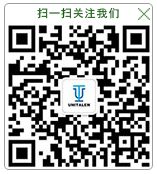Judicial Interpretation on Patent Dispute Effective from April 1
May 3, 2016Date: May 3, 2016
On March 22, China Supreme People’s Court announced at a press conference that “Interpretation (II) by the Supreme People's Court on Several Issues Concerning the Application of Law to the Trial of Patent Infringement Disputes” shall come into force on April 1, 2016.
According to Xiaoming Song, chief of the Third Civil Tribunal, the Interpretation (II) was passed by the Judicial Committee of the Supreme People's Court after 16 revisions, to serve the purpose of ensuring proper implementation of Patent Law, aligning and refining judicial standards on patent infringement, and meeting the new expectations in patent judgments arisen from technology innovation.
With a total of 31 articles, the Interpretation (II) covers the areas of claims interpretation, indirect infringement, standards implementation defense, legitimate source defense, ceasing of infringement act, indemnity calculation and the impact of patent invalidation on infringement litigation, so as to address the key issues found in patent juridical practices.
Extend juridical protection to solve issues of “long cycle, difficult to prove and low indemnity” in patent litigation.
The indirect infringement stipulated in Article 21 of the Interpretation (II) aims at further strengthening the protection to patentees, which can also be found in the ongoing draft revision of the Patent Law. In practice, an indirect infringer does not constitute joint negligence if it doesn’t have communication with the infringer who conducts the actual infringement act. However, if the indirect infringer has clear knowledge that the parts they provide to the infringer can only be used for manufacturing infringing product, or actively induces others to conduct patent infringement, its act shall fall into the circumstances prescribed by Article 9 of the Tort Liability Law, due to its subject malice.
Song indicated that it doesn’t mean the protection to the right holder is extended outside of the preexisting legal paradigm, instead, it’s an interpretation of the true meaning that shall apply to the Tort Liability Law, which is to be in compliance with the reality of the patent right holder’s protection.
In correspondence to the issues of “difficult to prove and low indemnity”, Article 27 of the Interpretation (II) has brought in certain improvement to the rule of evidence for indemnity amount in patent infringement litigations. Based on the patentee’s preliminary evidence and the evidence that are possessed by the infringer, the burden of proving the profit earned by the infringer is shifted to the infringer. This works in junction with Article 65 of Patent Law to determine the indemnity calculation order.
As to the issue of long cycle of trial, the Interpretation (II) has introduced the procedure of “dismissal first, new suit later”, i.e. the court may decide, procedurally instead of substantively, to dismiss a patent infringement litigation suit after Patent Reexamination Board issues invalidation decision against the patent at issue without having to wait for final outcome of the administrative litigation; while the patentee can file another lawsuit to obtain juridical protection if the invalidation decision is overturned during the administrative litigation.
Stick to the principle of interest balance, protect patentees’legal rights while avoid improper expansion of patent right.
While Article 70 of the Patent Law stipulates that any party who is engaged in use, offer for sale or sale shall be exempted from indemnity responsibility if their legitimate sources defenses is sustained, the dispute lies in whether a bona fide user shall cease the use after proving the legitimate source and paying a fair consideration. The Supreme Court, after thorough studying and collecting opinions from other legislative organizations, decides that it is against the original intent of Article 70 of Patent Law to overstate the interest of patentees through bypassing the rightful interests of bona fide users. Therefore, Article 25 of the Interpretation (II) exempts the bona fide users’who have paid a fair consideration from the liability to cease use by way of proviso.
Regarding the order to cease infringement activity, Article 26 of the Interpretation (II) stipulates that if the cessation of infringement activity would damage the interests of the State and the public, the court may order infringer to pay reasonable fees instead. (Source: People’s Daily)




